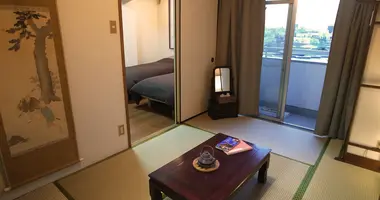Tomioka Hachiman-gu 富岡八幡宮
- Published on : 10/10/2018
- by : S.V.
- Youtube
A bountiful program
When entering the precincts of the TomiokaHachiman-gu Shinto shrine in Tokyo, you are overwhelmed by an essential part of the heritage and memory of the Japanese capital. Every corner, every monument, every event taking place there offers its share of history and delivers many anecdotes.
Once facing the sea
In Tokyo's Koto ward, Tomioka Hachiman-gu Shrine is the largest shrine in the capital dedicated to Hachiman , god of war and divine protector of Japan and the Japanese people. Founded in 1627, the shrine was erected at Eitai-jima, a sandbar in Edo Bay, at the request of Shogun Ieyasu Tokugawa to thank the god of war for bringing victory to his clan. Hachiman also being the protective deity of the Minamoto clan, of which the Tokugawa are the descendants, the places naturally received the protection of the Tokugawa shogunate throughout the Edo period (1603-1868). During the Meiji era (1868-1912), the shrine lost this protection but became part of the "Ten shrines of Tokyo", an official list of the ten major temples in the capital drawn up by the government.
To read: Visit Tokyo in the footsteps of the Tokugawa
Such precious mikoshi
Every year in mid-August, the Fukagawa Hachiman matsuri takes place here, a joyful procession of mikoshi constituting one of Tokyo's three major festivals. Since its creation in 1641, spectators have sprinkled sacred water on mikoshi bearers with the help of buckets or garden hoses!
Every three years a special edition of the festival called hon-matsuri is held during which two gigantic mikoshi walk the streets of the district among the usual hundred. The largest weighs nearly 4.5 tons.
In gold, platinum and silver and set with precious stones , it is a remarkable piece of goldsmithery. The rest of the year, these two precious mikoshi are stored in a small building to the right of the shrine's main gate. Stop for a few minutes to contemplate these real treasures.
Rich past
If you want to learn more about the long history of the place and its spectacular festival, we invite you to visit the Tomioka Hachiman-gu Museum . Numerous archival documents, photographs, handicrafts, tools, traditional costumes, prints and paintings document and illustrate the sanctuary from its creation to the present day.
The surveyor and cartographer Ino Tadataka (1745-1818), from whom Jiro Taniguchi drew inspiration for his land surveyor character in his manga Furari, lived near the shrine. The scientist went there before each trip praying for the safety and success of his missions; so much so that in 2001 a very beautiful bronze sculpture was erected at Tomioka Hachiman-gu to celebrate his memory.
See also: Jiro Taniguchi
All occasions are good!
The sanctuary is the place of many events. Every 1st, 15th and 28th of the month, the priests organize prayer ceremonies . Everyone can come freely to pray for prosperity or to show their gratitude to Hachiman in one of Tokyo's most prestigious haiden (ceremonial building). To attend, participants are invited to report at 8:50 a.m. at the reception desk in the main building.
Notice to collectors of all kinds and to the many bargain hunters, the sanctuary hosts a flea and antique market every first and second Sunday of the month. Around a hundred stands offer books, toys, ceramics, old jewellery, etc. The opportunity to find the rare pearl!
Finally, every June 17, a festival celebrates the Nanawarita jinja, a small annex temple to the east of the main building. Dedicated to the goddess Benzaiten, one of the Seven Deities of Happiness, it would have been built before the Tomioka Hachiman-gu. The people who came to take refuge there during the Kanto earthquake in 1923 and then the bombardments of the Second World War would have had their lives saved . The rest of the sanctuary was destroyed during air raids in 1945. Emperor Hirohito, who came himself to see the extent of the damage a few days later, deplored this tragic loss. Two stelae commemorate the imperial visit.
Pay homage to the rikishi
Until 1833, the Tomioka Hachiman-gu hosted two sumo tournaments a year because it was in its enclosure that the Kanjin-zumô was created in 1684, the predecessor organization of the Nihon Sumo Kyokai which organizes the current competitions. The shrine is therefore rightly considered the birthplace of sumo.
Over the years, several monuments dedicated to great wrestlers have appeared there. In 1900, the wrestler Jinmaku Kyugoro , recognized as the 12th yokozuna (highest rank of rikishi ) had the Yokozuna rikishi hi erected.
This stele, measuring 3.5 meters high and weighing 20 tons, bears the name of all the yokozuna . Nothing less was needed to celebrate the memory of these athletes of colossal stature! As for the Ozeki rikishi hi installed in 1983, it honors wrestlers who have reached the rank of ozeki .
In the immediate vicinity, two steles mark the gigantism and the power of the rikishi : the Kyojin rikishi shinchô hi , a 3-meter stone column, would mark the extraordinary height of a former rikishi and the Kyojin rikishi tegata ashigata hi bears the footprints of hand of exceptional wrestlers. Have fun placing your hand in one of the prints. This game is sure to make you feel small!
Address, timetable & access
Address
Phone
03-3642-1315Timetable
3 min walk from Monzen-nakacho station on the Tozai line.Price
Free admission. Entrance fee to the museum: 300 yen.Access
Open every day. Next major editions of the Fukugawa Hachiman matsuri in 2020 and 2023.Website
http://www.tomiokahachimangu.or.jp/







































